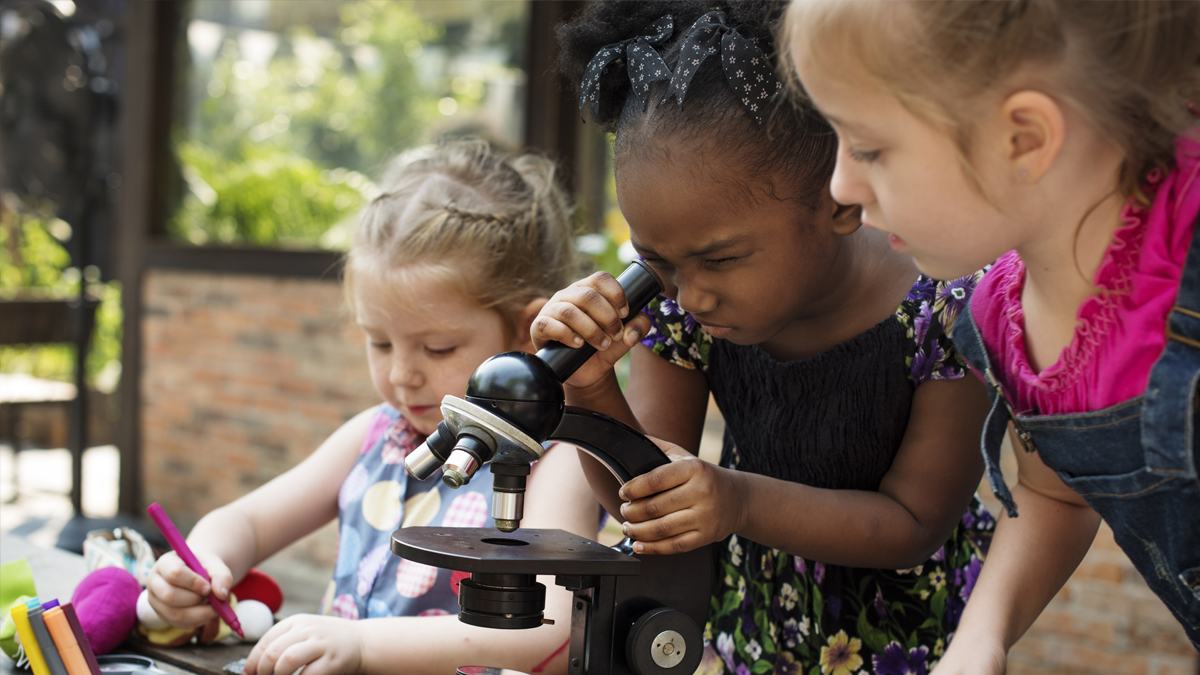Teaching Through Trade Books
Modeling Parts of Systems and Particle Movement in Matter
Discussing what cannot be seen is one of the challenges for young students when considering the disciplinary core idea related to matter and its interactions, specifically the structure and properties of matter. Instruction focuses on providing opportunities for the youngest students to understand that different objects can be built from smaller parts or pieces. The story How a House Is Built helps students consider the smaller pieces that help build systems. Students in intermediate grades focus on the idea that particles are too small to be seen; however, they also learn how this matter can be detected indirectly by other means. Students dive into understanding the basics about matter and how the particles that make up matter act in different states.
This Month’s Trade Books
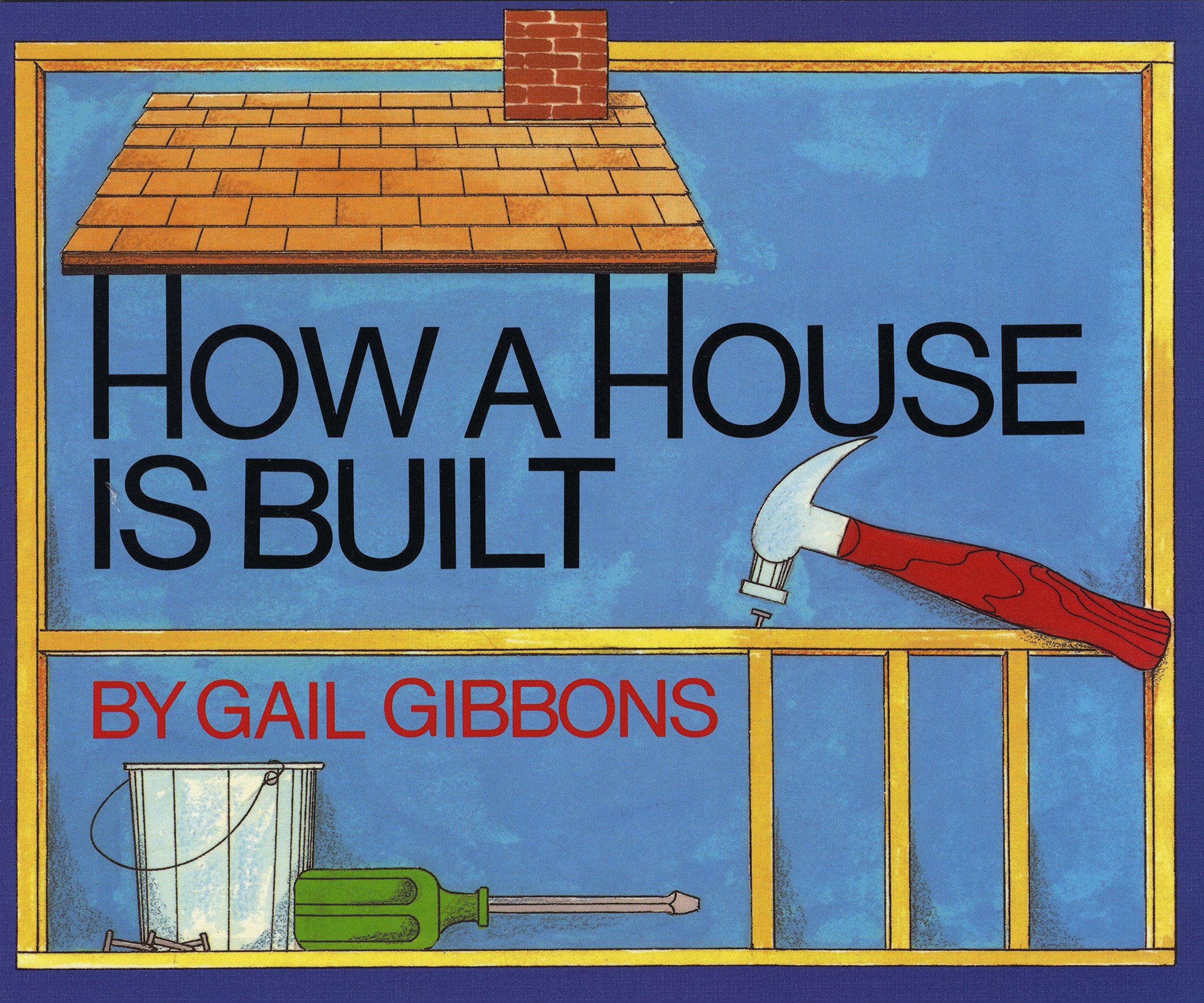
By Gail Gibbons
ISBN: 9780823412327
Holiday House
36 pages
Grades K–2
Synopsis
Through detailed illustrations and descriptive text, Gibbons explains step by step how a house is built, from finding the land to the construction process to the installation of the individual systems within the house. It explains how the different systems work and how together they help a family live in the house.
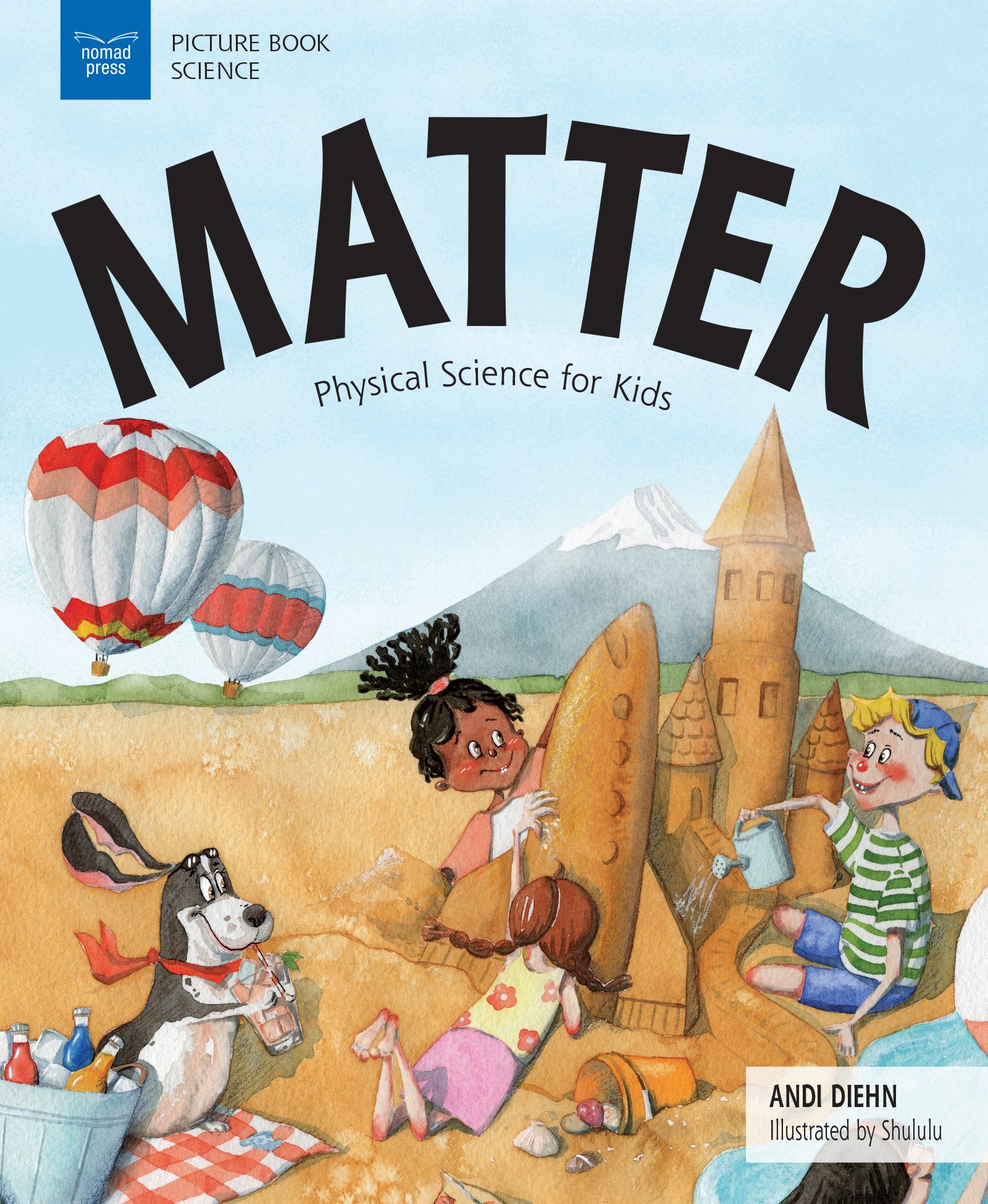
By Andi Diehn
Illustrated by Shululu
ISBN: 978-1-61930-644-8
Nomad Press
28 pages
Grades 2–4
Synopsis
This book explores the idea of “What is matter?” from a scientific perspective. Examples in the story help the reader connect the idea that matter makes up almost everything. The book shares examples of how we can detect matter through different ways of weighing it.
Grades K–2: Parts Make Up House Systems
PURPOSE
Students make observations about different objects that are used to make systems in a house as a way to illustrate that small pieces make up larger objects. Students demonstrate this understanding through the illustration of a house with certain systems.
ENGAGE
Ask each student to draw a picture of their home using as much detail as possible. To be sensitive to all living situations, use the term “home,” which allows students who live in different types of buildings to participate. Allow students to hang up their drawings for the rest of the class to view and begin a discussion with questions such as: What parts of the homes are similar? Different? What do you think we would see if we went inside the homes? Allow students to begin comparing and contrasting the commonalities and differences of the homes. Then pose a question to the students: What are the individual parts or pieces that make up a home? This may take some prompting to get students to consider that the home and its systems are made of individual pieces: wood, nails, and sheetrock to make the walls or wires and switches to bring electricity to the building.
- How a House Is Built
- drawing materials
- “It’s Made of Parts” student data sheet (see Supplemental Resources)
- clipboard with attached paper and pencils for each student
- box of materials for each group (sections of pipe with threaded ends, pipe connections such as U joints or T connections, electrical wire, light switches, long nails, pieces of 2×4 wood, small section of sheetrock, paint card samples, etc.)
- If I Built a House
- “If I Built a House” student sheet (see Supplemental Resources)
EXPLORE
Share the story How a House Is Built, stopping at the following pages to discuss the points. As you do, ask students to keep track of the different parts that make up each of the different systems in a house on their “It’s Made of Parts” student data sheet (see NSTA Connection).
- pp. 1–4: Ask the students who lives in each type of home described and if they have visited different types of houses than the one where they live? Have the students describe what makes up each type of house they are introduced to in the photos.
- pp. 5–7: Many people work on building a house. What do you think we could call a group of individual people that work on building a house? Why do you think a construction crew needs many different people?
- pp. 8–13: What is a foundation and how is it made? What materials are used to make the foundation?
- pp. 14–21: What two parts of the house are being installed next? What individual parts make up a plumbing system? What individual parts make up the frame and walls of the house?
- pp. 22–23: Two people on the construction crew are roofers, who put on the roof, and masons, who build the chimney. What materials do they need for their job?
- pp. 24–27: What parts inside the walls do people need? What does each object do?
To help students understand how different parts are needed to create a system and how many systems make up a building, collaborate with the facilities manager or custodian in your school and ask them to take students on a tour of the different parts of the building. Provide students with clipboards, paper, and pencils and ask them to draw the different parts they see that make up the following systems: plumbing, electrical, walls/structure, and outside grounds.
EXPLAIN
After the building tour, ask students to return to the classroom and divide into groups. Provide each group with a box of materials and ask them to discuss each item and answer the following question about each item: What is the item used for in building a house and what system or bigger part of the house needs it? As you circulate the room, use the following questions to elicit student understanding of parts making a whole system and many systems making a whole house:
- Which items do you think help bring water to the sink or drain water from the sink?
- Which items are used to build or construct walls? What would happen if there were no nails available? What happens to the walls?
- Which items help bring electricity to the house?
Ask the groups to choose one item from the box and describe to the rest of the class their decision about where it is used in the house and what system it is part of. Allow other students to ask questions or elaborate on what their group discussed.
ELABORATE
Share an additional story with students called If I Built a House (Van Dusen 2019) as a way to generate ideas of what houses might look like in a fantasy world. Ask students to think like an architect similar to the one in Gibbons’s story and to create an illustration of a house they would build on the “If I Built a House” student sheet (see NSTA Connection). Point out that the sheet asks them to not only design the outside of the house but also show the inside of the house and the location of different rooms, such as a kitchen and bedroom. They are also asked to identify what types of systems the specific rooms would need. For example, the kitchen would need electrical and plumbing to bring water to the sink and take the water to the sewer. Allow students to display their work in an appropriate place in the classroom and their peers to view the illustrations. Ask students to compare their first pictures of the house they live in with these pictures.
EVALUATE
The idea of parts making up an object and the same parts looking different in each object is one that challenges the student’s thinking initially. By using a common object, such as the place they live, they are asked to initially demonstrate their ability to identify different parts that make a whole. As they move into the explore and explain sections, they are developing a better understanding of the different parts that make up systems in their school, which they are asked to demonstrate through explanation and illustrations. Finally, students are applying that understanding through the creation of their fantasy house.
Grades 3–5: Particles Make Up Everything
PURPOSE
Students discuss how particles that are too small to be seen make up matter. They engage in kinesthetic activities where they represent a single particle to model how particles move in a solid, liquid, and gas.
ENGAGE
Show students the cover of the book and ask them to use the term matter in a sentence. Students will likely say “it doesn’t matter” or “what’s the matter?” which is a great introduction to the story and the fact that we often have different meanings for the same word. Read pages 1–5 to the students and have them focus on how the word matter is used in the narrative, which is similar to the examples provided here. Then pose the following question: “What do you think scientists mean when they use the word matter?” As students share their understanding, ask them to explain their answers. Explain to the students that you want them to continue to think about the word matter as they explore different activities. Teacher note: According to the NGSS, “matter of any type can be subdivided into particles that are too small to see, but even then the matter still exists and can be detected by other means” (NGSS Lead States 2013, p. 43). Students will be focusing on exploring different states of matter and how they can detect it.
- Matter: Physical Science for Kids
- painter’s tape
- “Matter Models” student data sheet (see Supplemental Resources)
- “Particle Movement” student sheet (see Supplemental Resources)
EXPLORE
To help facilitate student engagement in these activities, each one should be done by the class with guidance from the teacher. Each of the activities is meant to help students develop models representing matter in different states. A management strategy for ensuring students are able to observe what is happening is to divide the class into two groups so that one group can create the model while the other observes what is happening; then they switch roles. Students are informed that each of them represents a single particle that makes up a substance.
First Representation: Solid. Using painter’s tape, mark a space on the floor that is roughly 4 feet by 4 feet. Ask the students to stand in three lines within the space and place their arms around each other’s shoulder’s similar to a kick line group. They should be as close to each other as possible. The people on each end with one free hand should place their free hand on the shoulder of the person in the line in front of them where possible. This may mean that students need to move the line forward to do so. The group observing should be answering questions on their “Matter Models” student sheet (see NSTA Connection). Actions to help students understand particle movement in a solid include asking the demonstration group to try moving to different points in the room without losing their structure. They will need to shuffle along as they move. Questions include, what happens when a solid (students in demonstration group) interacts with another object such as a desk? What do you notice about the location of each particle (student) to each other over time?
Second Representation: Liquid. Ahead of this activity, use painter’s tape to create an additional shape on the floor that is near but not touching the first square shape. The second shape should be thinner and longer than the first so that it represents a rectangle. Explain that the students will be using the same process of being a particle but have them drop their arms. This time students can freely move around as long as they stay within the space drawn on the floor and within touching distance of another particle. Questions to help the observers include: Why do you think the particles need to stay within the same space and must be near each other? After they have had a chance to see what happens if the shape was turned on one side (to demonstrate this, students move to one side acting as if they were water), explain that they will now model what happens when a liquid is poured into a different container. Ask the students to move into the next shape on the floor. Student observers need to focus on what happens to the number of particles as well as the shape of the container. Model this for the entire class using two different shaped containers and water when done.
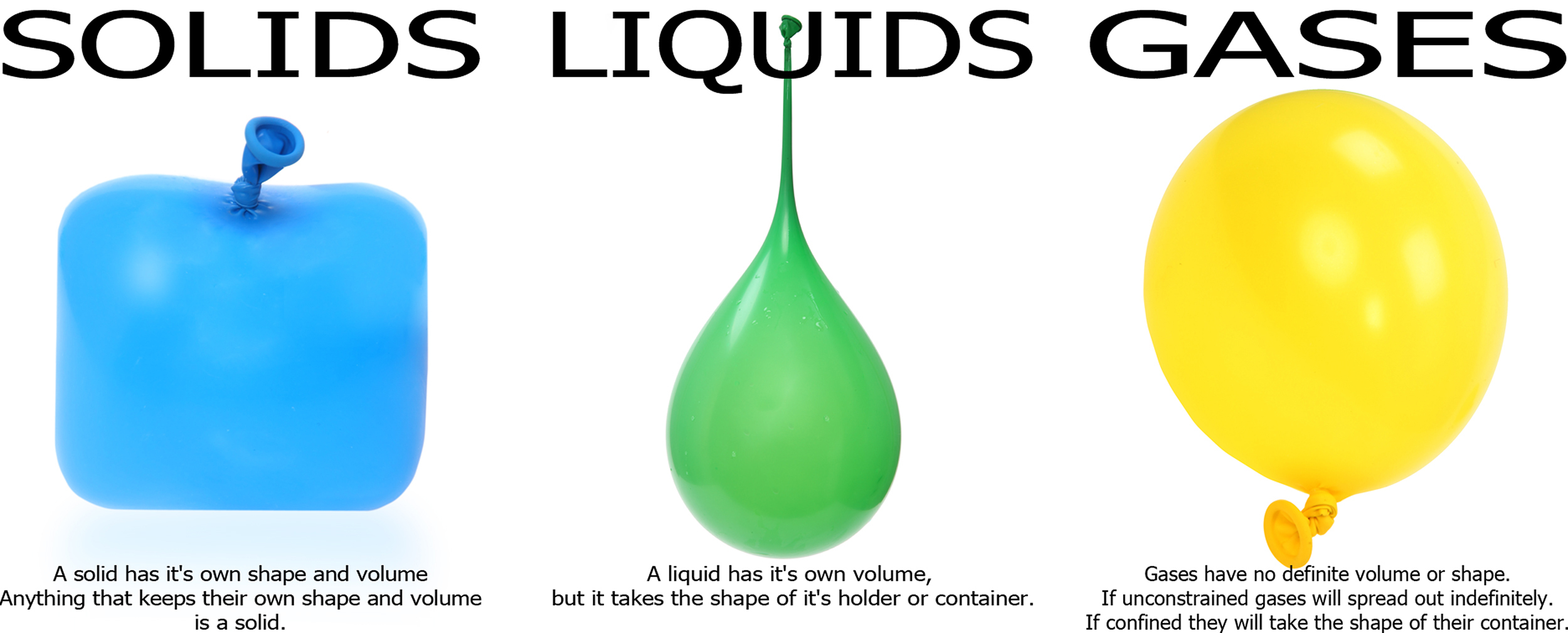
Third Representation: Gas. Students now represent gas particles. The only guidelines are that they must stay within the boundaries that are created by a structure (i.e., a room). Allow students to float around freely in the room with the classroom door closed for others to observe what happens. Then open the door and allow students near the door to float into the hallway. Questions include: What happens when gas particles with a smell (such as the smell of freshly popped popcorn) are able to move around the room? When the door opens?
EXPLAIN
Discuss the observations students made and the diagrams that they created to represent particles in different states. Return to the question posed earlier and ask them to consider again “What do scientists mean when they say ‘matter’?” Engage them in a discussion around their ideas. Provide some overview of the idea using the following pages in Matter: Physical Science for Kids.
- pp. 6–7: Ask students to compare their description of “matter” to the one that the scientists use and is provided in the book (“the stuff that makes up almost everything in the world” and “matter is anything that takes up space and can be weighed”). How is their definition similar to or different from this definition? Ask students to explain what in the room is made up of matter.
- pp. 10–11: After reading that air is matter and ways it can be detected, ask students to do the activity on page 11 to illustrate that as air escapes from a balloon, it begins to weigh less, which is seen through the change in the balance. Ask students if they can see the air as it escapes? Which of the representations above connect to the fact that air is matter?
- pp. 12–13: Read the story that describes how liquids take the shape of the container that they fill. Ask students to share examples where they have observed liquid in a container that has weight (which indicates matter) and the container without the liquid isn’t as heavy. Why do they think the representation above allows the particles (the students) to be able to move around more freely but within a set area?
- pp. 14–16: Share the idea that matter makes up many items that have different shapes and sizes. These solid items keep their shape more than a gas or liquid. Ask students to explain how the representation where they kept their structure by placing hands on the shoulders of people next to them is similar to how matter is in a solid.
- p. 16: Ask the students to do the “Try This” activity where they name five objects made of matter that represent gas, liquid, and solid. Continue to read the story and point out that light and heat are not made of matter and discuss that the three states of matter they will discuss are solids, liquids, and gases.
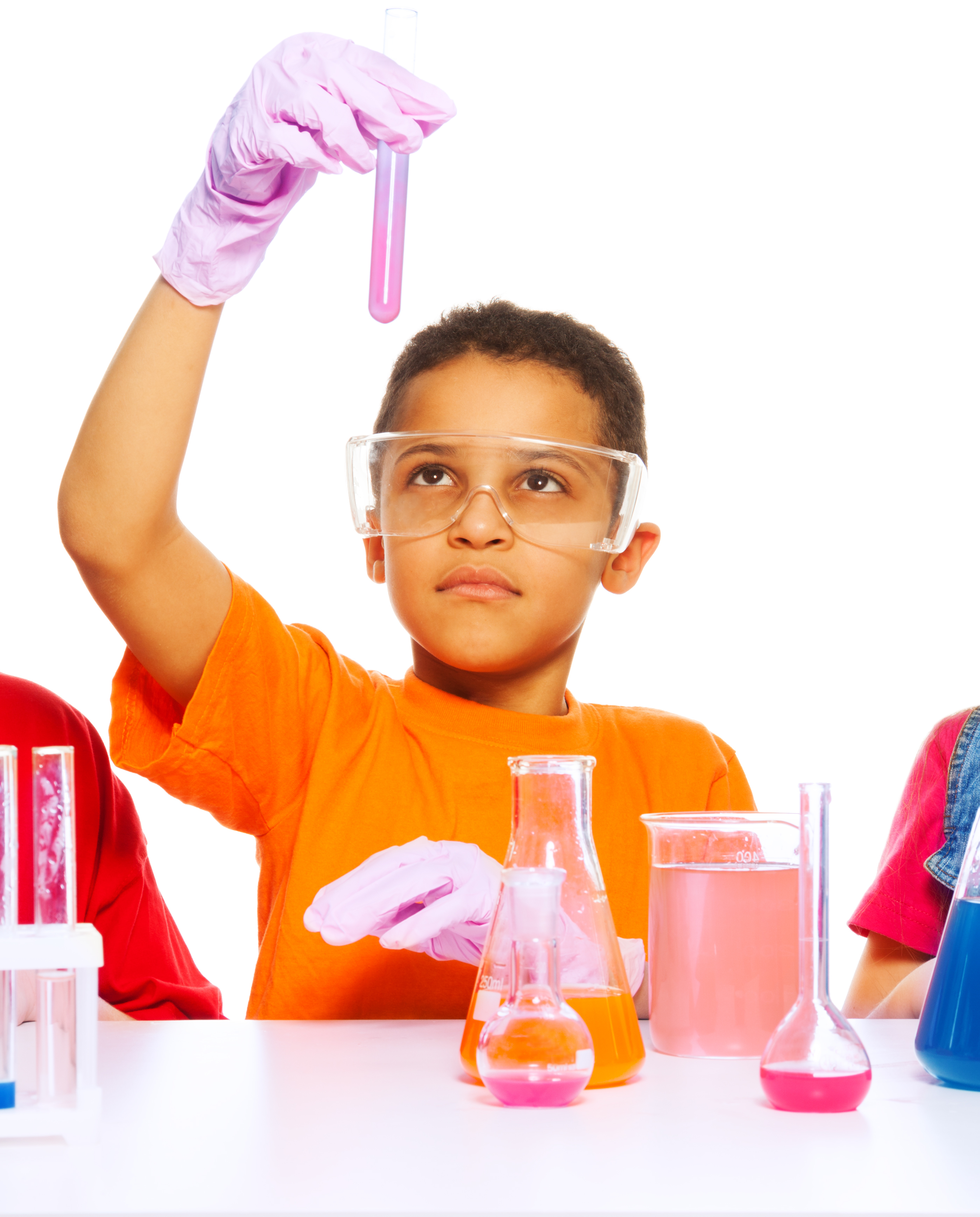
ELABORATE
Students are asked to explain and illustrate how particles move in a solid, liquid, and gas in different situations. Using the “Particle Movement” student sheet, ask student pairs to first read the scenario provided and then discuss if the best representation is for a solid, liquid, or gas and why. After deciding on the type of particle, students create an illustration that helps convey what is happening to the particles in the situation. After students have finished their illustrations, ask them to share their ideas with their classmates who should provide constructive feedback. Examples of the situations include students needing to add air to a soccer ball so that they can play soccer.
EVALUATE
Students’ initial ideas about what makes up everything is elicited in the engage section. Students then make observations and discuss their understanding of what is happening by engaging in kinesthetic activities to create models of how particles act in different states. Students connect their understanding of the key ideas discussed in the book by creating illustrations of different scenarios.
Earth & Space Science Physical Science Elementary



